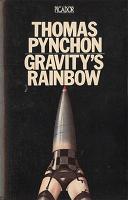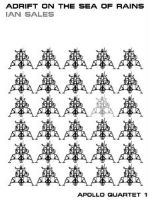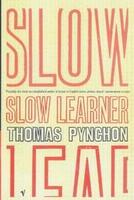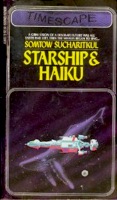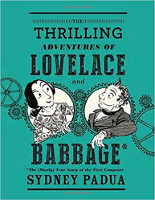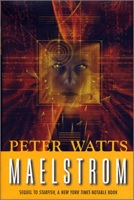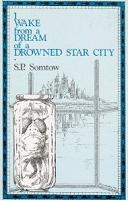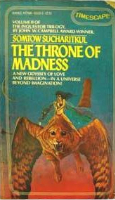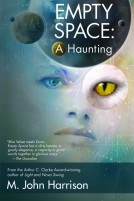 M. John Harrison – Empty Space: A Haunting
M. John Harrison – Empty Space: A Haunting
M. John Harrison is quite an old hand at this writing malarkey – depending which website you look at, and how you count them he's got about 20 novels and non-fiction books to his name. Add in omnibus editions, collections, foreign editions, and graphic novels, and you get a substantial list. The Kefahuchi Tract series, of which Empty Space: A Haunting is the 3rd instalment, is his triumphant return to Space Opera – with a proper Harrison slant, of course. The UK Edition was published last summer and has been shortlisted for a BSFA Award meanwhile (the previous book in the series, Nova Swing, won the Arthur C Clarke and the Philip K Dick Awards); the US Edition will be out in March.
Our instruments have limits. Since knowledge of physical reality depends on what we can measure, we will never know all there is to know... Much better to accept that our knowledge of physical reality is necessarily incomplete... (Marcelo Gleister)
The story follows three strands – the first one plays on Earth, in the near-future, follows Anna Waterman, a 60 year-old widow living in East Sussex. Her life is changing, and so are her relationships with her daughter and her therapist. It is unclear how much of the strange things happening, the visitations and illusions happen inside her head, or are real – this strand, even more than the other ones, projects a sense of lostness, delirium, and unreality in parts.
Leaked navigational nanoware or eleven-dimensional imaging code slips up someone's anus at night, and discovers it can run on a protein substrate. In a similar way, ads, memes, diseases and algorithms escape into the wild. The can run on your neurons, they can run inside your cells. They perform a default conversion...
The other two strands are partially interwoven, and display a clear relationship. Both play out in a volume of space around the Kefahuchi Tract and its associated physical anomalies in reality (as we understand it), both are far in the future. The first of those follows the eponymous Nova Swing, the ship which gave the 2nd book in the series its name. Fat Antoyne (he's not fat anymore, but everybody still calls him that) is taking on a mysterious cargo, described as a 'mortsafe'. It's unclear what it is, but it's quite likely alien, and most likely illegal.
MP Ronoko, the character he deals with as he and his fellow crew try to deliver this and receive their payments is even more of a cypher.
The final strand, and in terms of the protagonist's inner life the most interesting, follows the Assistant (she is looking for the right name for herself throughout the book). She works for SiteCrime, and gets involved when Toni Reno, who delivered the mortsafe to the Nova Swing, turns up dead. Not that he's the only one ending up like this – and all the deaths seem to be connected to a mysterious entity called Perlant, who comes from the future (or the past?), and is asking for the Assistant.
Their present mission might seem weird, even unhip, to today's kids: until you realised that a hundred thousand years ago Panamax IV was inhabited by fuck-off telepathic reptile aliens from beyond the universe. That was the draw.
This is by no means a straight-forward story/book. It is a fascinating, disorienting world, which feels like it's intersecting ours at an angle (I'm sure Anna would agree). The membrane between the real and the imaginative, the artificial and the simulated/virtual, the hallucinated and the unreal is thin, disorientingly so at times.
Some of the writing, and the trip it takes you on, is reminiscent of Sinclair, although the plotting and its lack (perceived or otherwise) of stringency and cohesion feels more like a Lynch movie. But it has to be said that the story, once you're halfway in and start to get some inklings of overlap/connection between the near-/far-future threads, develops much more drive and direction than either of these touchstones normally provide.
Still, it would be silly to expect a neatly packaged resolution, with all questions answered, and all ends tied up – there are plenty of characters which come and go without a fixed place in the this, and plenty of strands which seem to go nowhere.
Some of the technical bits mentions were quite interesting – the personal augmentation/genetical enhancement which especially the Assistant carries is known as 'tailoring'; the 'Event Site' near Saudade City (where the Nova Swing and the Assistant start out) strongly reminded me of Enki Bilal's Immortals; and I really like the idea (well, for a value of 'like') of connecting to your brain stem by routing the cables through the roof of your mouth...
Whilst this is a part of a series I would think that it can quite well stand on its own. If you like your SF with a touch of mysticism/mystery, or are simply curious of why this book was shortlisted for the BSFA award then I can heartily recommend that you pick up a copy!
More M. John Harrison
Title: Empty Space: A Haunting
Author: M. John Harrison
Series: Kefahuchi Tract
Series Number: 3
Reviewer: Markus
Reviewer URL: http://thierstein.net
Publisher: Night Shade Books
Publisher URL: http://www.nightshadebooks.com
Publication Date: July 2012
Review Date: 130130
ISBN: 9781597804615
Price: UKP
Pages: 243
Format: ePub
Topic: Space Opera
Topic: Mysticism
Thanks to the publisher for the review copy.

